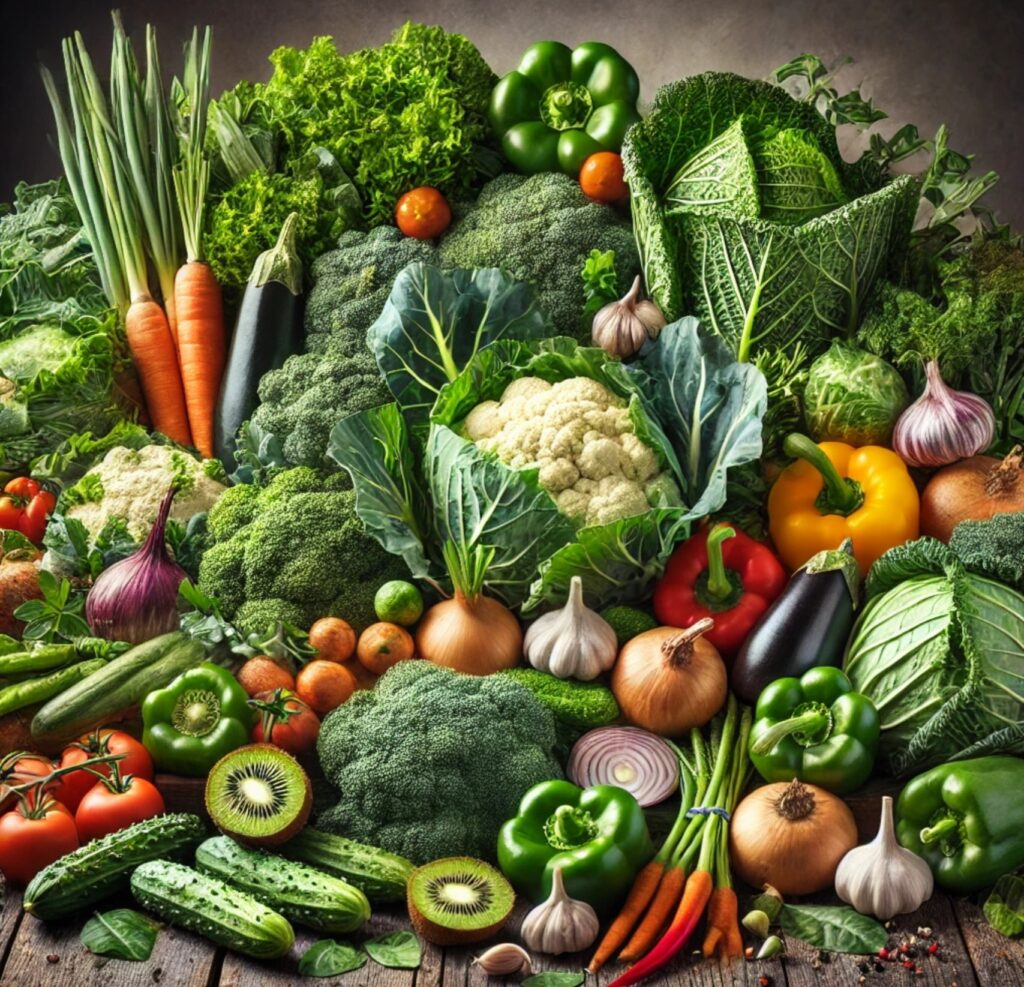Type 2 diabetes is a metabolic disorder characterized by insulin resistance and high blood sugar levels. While medication plays a role in managing diabetes, dietary interventions have demonstrated significant potential in improving insulin sensitivity, reducing blood sugar levels, and even reversing the condition in some cases. Among dietary strategies, consuming specific vegetables daily has been shown to exert profound effects on glucose metabolism, oxidative stress reduction, and pancreatic beta-cell function restoration. This article explores the science behind vegetables that can aid in reversing type 2 diabetes and provides a research-backed guide on their consumption.
Mechanisms by Which Vegetables Help Reverse Diabetes
- Regulation of Blood Sugar Levels: Low-glycemic index (GI) vegetables prevent blood sugar spikes and help maintain stable glucose levels.
- Enhancement of Insulin Sensitivity: Certain bioactive compounds in vegetables improve insulin receptor function and glucose uptake by cells.
- Reduction of Inflammation: Chronic inflammation is a major contributor to insulin resistance, and vegetables rich in antioxidants combat oxidative stress.
- Gut Microbiome Modulation: Fiber-rich vegetables support gut bacteria that produce short-chain fatty acids (SCFAs), which enhance insulin sensitivity.
- Weight Management: Vegetables are low in calories but high in fiber, promoting satiety and reducing overall caloric intake, aiding in weight loss.
Best Vegetables for Daily Consumption to Reverse Diabetes
Leafy Greens (Spinach, Kale, Swiss Chard)
Scientific Benefits: High in magnesium, which plays a critical role in glucose metabolism and insulin function.
Research Evidence: Studies suggest that consuming leafy greens daily reduces the risk of type 2 diabetes by up to 14%.
Best Way to Consume: Raw in salads, blended in smoothies, or lightly sautéed to preserve nutrients.
Cruciferous Vegetables (Broccoli, Cauliflower, Brussels Sprouts)
Scientific Benefits: Rich in sulforaphane, an antioxidant that reduces oxidative stress and enhances insulin sensitivity.
Research Evidence: A study found that sulforaphane-rich diets reduce fasting blood sugar levels in diabetic individuals.
Best Way to Consume: Steamed or roasted to maximize nutrient retention.
Bitter Melon (Momordica charantia)
Scientific Benefits: Contains charantin and polypeptide-p, which mimic insulin and lower blood sugar levels.
Research Evidence: Clinical trials have demonstrated that bitter melon significantly reduces A1C levels in type 2 diabetics.
Best Way to Consume: Juice extracted from fresh bitter melon or included in stir-fries.
Okra (Abelmoschus esculentus)
Scientific Benefits: High in soluble fiber, slowing glucose absorption and improving insulin response.
Research Evidence: Animal studies indicate that okra extract reduces blood sugar levels and improves lipid profiles.
Best Way to Consume: Boiled, roasted, or blended into soups.
Garlic and Onions
Scientific Benefits: Contain allicin and other sulfur compounds that improve insulin sensitivity and lower blood glucose.
Research Evidence: Studies show that daily garlic consumption reduces fasting blood sugar levels and cholesterol.
Best Way to Consume: Raw or cooked in various dishes to retain bioactive compounds.
Bell Peppers
Scientific Benefits: High in vitamin C, which reduces inflammation and oxidative stress associated with diabetes.
Research Evidence: Antioxidants in bell peppers improve endothelial function and insulin action.
Best Way to Consume: Raw in salads or stir-fried for maximum nutrient retention.
Carrots
Scientific Benefits: Rich in beta-carotene, which helps regulate blood sugar and improves vision health.
Research Evidence: Carrots have a low GI and support beta-cell function in the pancreas.
Best Way to Consume: Raw as snacks or blended into juices.
Cabbage
Scientific Benefits: Contains fiber and anthocyanins, which lower inflammation and improve glucose metabolism.
Research Evidence: Cabbage consumption is linked to reduced HbA1c levels in diabetics.
Best Way to Consume: Fermented as sauerkraut or lightly sautéed.
Tomatoes
Scientific Benefits: Rich in lycopene, which lowers oxidative stress and inflammation.
Research Evidence: A study showed that daily tomato intake reduces cardiovascular risks in diabetics.
Best Way to Consume: Fresh in salads or cooked into sauces.
Mushrooms
Scientific Benefits: Rich in beta-glucans, which improve insulin sensitivity and reduce postprandial blood sugar spikes.
Research Evidence: A study found that mushroom extracts significantly reduce insulin resistance.
Best Way to Consume: Sautéed, grilled, or added to soups.
Practical Guidelines for Daily Vegetable Consumption
- Diversity Matters: Include a variety of vegetables to maximize nutrient intake and benefits.
- Portion Control: Aim for at least 5 servings (about 2.5 cups) of non-starchy vegetables daily.
- Cooking Methods: Prefer steaming, boiling, or roasting over deep-frying to preserve nutritional integrity.
- Pairing with Healthy Fats: Consume vegetables with healthy fats (e.g., olive oil, avocados) to enhance absorption of fat-soluble vitamins.
- Monitor Blood Sugar: Track glucose levels to determine the effectiveness of dietary changes.
A Vegetable-Rich Diet for Diabetes Reversal
While no single food can completely reverse diabetes, scientific evidence supports the powerful role of vegetables in improving insulin sensitivity, reducing blood sugar levels, and even facilitating diabetes remission when combined with an overall healthy lifestyle. Incorporating the recommended vegetables into a daily diet can significantly contribute to managing and potentially reversing type 2 diabetes.

